This post is meant to provide a summary of one of the most important skillsets as it pertains to Masonic and Freemason teaching. Their own members would likely describe it as both literally and figuratively the “Foundation” of the Masonic Temple, and Secret Societies in general.
So important is this teaching that you find it grafted in our modern understanding, although with varying levels of plausible deniability and obfuscation slathered all over it to hide the “deeper meaning” behind the practice.
Which is to say, this concept of the Compass is so all-encompassing that any initiate who cannot grasp its understanding is relegated to the lowest rung of the Masonic ladder to be nothing more than a door man or drink server for the lodge. In other words, if you can’t see the importance and adaptability of this module system, then you’re a lost cause not only for secret society function but for life in general. You will be classed as an NPC in the old tongue — a beast of burden whose mental function is no different than a chattel or goyim who can only take commands but never give them.
Someone who cannot form existential questions in their mind…
What is this all-important concept, you may ask? What idea could possibly so defining to the Order?
Well, the funny part is that you’ve already seen it about 3 times over and likely still have no idea how it relates to Masonry, Alchemy, and Technology. Question: What do these three have in common?
Well, for one, they are all identical in their purpose. They are components of a operating system whose purpose is of organization, classification, and categorization.
Anyone familiar with object-oriented programming would do well to apply that logic here.
As well as all have an emphasis on the number 4.
But, I’m getting ahead of myself. First I must establish the usefulness of this system and how it can be used practically rather than just theoretically.
Starting From Scratch
Let’s say you want to categorize something based on one of its intrinsic properties. For example, you wanted to categorize construction materials based on how soft or hard they are. Soft things go to the left, hard things go to the right, on a spectrum.
It might look something like this:
Now, you can debate my choice of these materials, but let’s just focus on the idea here. Using wood as a midpoint, I’ve plotted the hardness of construction materials based on how they are typically used in building. Particularly, I focused on organizing them around their use as a foundation being the key feature or property. For example, you naturally would build steel framework on a stone base, wood on steel, plastic on wood, rubber on plastic, and cloth on rubber. In other words, if I were to build a tower using these components, I most certainly would not layer cloth and rubber near the bottom of the tower to serve as the primary foundation layer. For those reasons, I think my spectrum is serviceable.
Now, this may seem elementary to you, and that’s a good thing. This is supposed to be some child-level stuff, but unfortunately there is a large base of people in this world who still cannot grasp this very simple concept of organization by material property, even using such visual handicaps to do so. Secret Societies cannot use such people as cogs in their machine because they cannot form rational thought enough for those rational thoughts to be corrupted and serve as a cognizant stooge who can issue and receive commands. It’s the difference between a dog and a sheep. You can teach a sheep tricks, sure, but they cannot think on their own. They cannot understand that you, their master, are in danger and, like Lassie, go tell others that Timmy fell down the well. You cannot rely on a sheep to do that.
Now, if you can manage that, congratulations, you have the capacity for free thought.
Moving on.
Let’s consider another spectrum, this time based on dull to sharp.
Once again, we have a scale by which we can organize tools based on their cutting ability. Hammers would be considered dull where a blade would be considered peak sharpness. Note, however, that material isn’t being taken into account here, simply the dimension of the tool’s face and how well that face can be used to perform the task of cutting. Using this diagram we just assume an invariable, constant material for sake of comparison.
Now, what if I were to take that spectrum and add another dimension to it?
Instead of just a scale of soft to hard to describe toughness or dull to sharp to describe its edge, I combine the two and make something more than a spectrum?
It would look something like this:
You might notice, however, that I kept the names of tools rather than material, because the material is the property which determines the ideal edge for the tool. For example, you can make a wooden blade, but it would not ever get as hard as a steel blade. Therefore, the blade is categorized based on its ideal material. This overlooked and assumptive concept is the same concept that considers hierarchy — that two objects of the same form can be different based on composition. This same idea is considered when hiring an employee. Two identical people can apply for a job, but their material properties, their character, determines who is better suited for the position in your mind. However, should someone not fit the proper form you’re looking for, it immediately disqualifies them. For example, someone in a wheelchair isn’t gonna get the job of a miner. There’s just too much against that idea from working out. Which isn’t to say it’s impossible, only that you wouldn’t choose a wooden mining pick if there was nothing to stop you from using a metal one instead.
For that reason, material designation is the secondary property over the primary form. It ultimately doesn’t matter what material you have to choose from if a blade is dull enough to be considered a hammer.
The Next Dimension
Okay, with those elementary school distinctions out of the way, do you see now how this system can be used to categorize and organize? Each spectrum, or scale, is a module or map which can be interchanged with other property scales to create all sorts of grids by which we can classify a thing. For example, I could change soft/dull out with any number of concepts such as hot/cold, wet/dry, up/down, left/right.
You see where I’m going with this? Not all will make sense for the function of a tool, but the modularity of these greater concepts is what the system relies upon.
All things have these properties. The properties on their own mean nothing outside their realm of influence. The sharpness of an object cannot be directly compared to the temperature of an object, for instance. Saying something is hot is not the same as saying something is sharp. It’s only when you intersect the two that you can then determine the difference between, say, a hot-sharp object versus a cold-dull object, or any other combination of temperature vs. edge.
Unless you compare and contrast using the above square grid, you’re operating based only on semantics and not reason.
This is where a lot of people get lost in the weeds. That always happens when you add a dimension, like going from drawing in 2D to 3D. Everyone can draw a stick figure because flat subject matter works on flat material(paper). However, not everyone can draw a dimensioned figure with the illusion of depth on the flat medium that is paper. Representing a 3D form in 2D is a tricky thing, and is exactly what we’re doing conceptually when intersecting modules/spectrums of properties in this way.
If you add another property, what form do you get? Plot a 3D grid of hot/cold, sharp/dull, and soft/hard all in the same diagram. Would it look something like this?:
You see how it can get complicated putting an axe somewhere in this grid and have it make sense? How do you represent depth? Change the size of the font to express it being deeper in the cube? That’s why the more dimensions you add, the more properties, the more complicated any thing becomes. If you understand this, then you understand just how difficult it is to categorize things without slipping into subjective, opinionated, thought. Measurements are required to determine these properties, which is why things like the Rockwell hardness scale, fahrenheit/celsius degrees, and the Brubacher Edge Sharpness Scale come into existence.
Units of measurement are developed to categorize things more accurately, but they aren’t needed the majority of the time. It’s obvious to anyone who has held a hammer that the tool simply won’t cut. There’s no need to measure its sharpness because no scale has bothered to register such dullness. The sharpness of a hammer is implicit, otherwise it wouldn’t be considered a hammer.
Which enters a paradoxical state where we wonder “is a tool named after its function or is a function named after the tool?”
Did we call hammers hammers because they were designed to hammer, or are they called hammers because they’re good at hammering? Does the design of a tool come before or after the function? Do we create tools to serve a function, or does the creation of a tool also create that function? Where does the word come from?
Remember what I said about how not having the capacity for free thought is a disqualifier? If you think the above ponderance is stupid and not worthy of discussion, then you’ve failed the test. These are existential questions, and if they cannot be taken seriously then your assessment of them is worth nothing more than the pointless bleating of a sheep. Sorry to be heavy handed with that, but that’s the same response you’d get from a Mason instructor as they work to separate wheat from the chafe.
Moving on, or rather, moving back to the 2D realm, we can see how the Political Compass was composed using these same dynamics. Again, the system is modular, and you can intersect any number of concepts to compare and contrast for use in classification. It doesn’t strictly have to apply to tangible things, but can also be used to describe philosophical and economic things.
Left-Right vs Authoritarian/Libertarian:
Seeing the name of this “Map” lends itself to the concept of a “Compass.”
You can position yourself on the diagram just as you can position yourself on a map. Your bearing and position, therefore, can bet determined by use of a Compass. It gets very nautical here, so I hope you’re keeping up.
Of course, there’s other Q-referenced MAPs I can discuss, but for the sake of brevity let’s just keep on subject with the nature of classification, organization, and categorization.
Modular Thinking
Because of the modularity of the system, you can interchange the spectrums to form any number of maps. A compass, therefore, is the desired tool to navigate these diagrams and plot courses, lines, and curves.
One such system was developed for quantifying and classifying the immaterial world. Not just emotional, mind you, but metaphysical.
How would you classify the concept of greed?
How would you classify the concept of order?
Is it possible to be greedy and orderly, greedy and chaotic? We all can envision charitability and order, but what about expressing charitability and chaos? What would that look like?
If you’ve never thought about what a charitable and chaotic person may be called, then why not? Why did it take me to lay it out in a module, a map, for you to see the classification on the horizon? You see, I’m getting into a lot of symbolic terms here, because the very nature of these terms is expeditious in nature. Words are used to mark locations on these MAPs for others to reference. You don’t need to go there to admit that they are actual places.
You don’t need to go to Mexico to talk about Mexico.
When I talk about something being Mexican, you probably get pictures of vibrant colors, dark-skinned people, salsa, beans and tortillas, correct? It’s a location, as well as a culture, just how we can map differences between terms like “peace” and “tranquility.” They’re two words which roughly mean the same thing, but they are different enough that we have designated two separate words to describe a similar concept. It’d be like saying Alaska and Florida are comparable states. Sure, they have a lot in common being in the same country and hosting denizens with similar values, but if I were to show a picture of a Florida swamp and an Alaskan tundra, it’s pretty clear we aren’t talking about the same place.
Still, though, while they are not geographically similar, the people from both places would likely value something like firearms with a similar appreciation. Alaskans need guns to fend off bears while Floridians need guns to fend off alligators. A city-going New Yorker just wouldn’t understand, not because they don’t have alligators or bears, but because they don’t have anything close to alligators or bears to contend with. It doesn’t matter what big monstrous animal they have to deal with so long as the only answer for dealing with them is a firearm of a sizeable caliber. Because of that, it is safe to say Florida and Alaska are more similar to one another culturally while New York and Alaska are more similar geographically, being of a northern climate.
This same concept is applied not only geographically, concerning culture and values, but also across the conceptual landscape. Someone who grew up in a place where food is hard to come by and flavorless will view spicy and vibrant cuisine with much more appreciation simply by the circumstances of their origin. Those who grew up with spicy and vibrant food will think nothing special of it, though they may see the bland food as completely worthless if not inedible.
Why does this matter? Because it isn’t entirely unquantifiable. We can map these relationships using the above system. A compass is a device which allows you to plot the course between the two and form bonds and relationships — open avenues for trade.
We only know the differences between order and chaos, peace and war, authoritarianism and libertarianism, and left and right because of those adventurous few who crossed the great chasm and opened up lines of communication between these ethereal concepts.
Without peace, how might we compare to war? Without light, how might we know we are in the dark?
Our ancestors painstakingly worked to categorize these ideals, and they settled upon very strange cross-section which they determined was the best jumping-off point for any comparison one would wish to attempt. They called this cross-section, the Four Elements.
Water, Fire, Air/Wind, and Earth.
Both figurative and literal in nature.
What is important is that we can approach this diagram both physically and metaphysically.
What does it mean to be HOT as it pertains to popularity?
What does it mean to be WET as it pertains to sensationalism?
What is “water cooler talk?”
>Water cooler is used in expressions that refer to the informal conversations that people have in their office or workplace.
By using analogous terms to describe things of a more socio-political nature, it is possible to apply themes developed in the physical world for situations in social interactions between people, cultures, and groups.
We call these expressions, Idioms.
Idiomatic Expressions are half colloquial, half experiential analogues for situations that occur in the human/language world and are directly comparable in theme and dynamic function to natural phenomena.
More formally, idiomatic expressions are groups of words with an established meaning unrelated to the meanings of the individual words. Sometimes called an expression, an idiom can be very colorful and make a 'picture' in our minds. Some common idiomatic expressions: He let the cat out of the bag (accidentally told a secret).
Double Meanings. Not purely literal nor purely figurative.
Something whose meaning can be understood only by those who have experienced it.
Therefore, the MAP above denoting the elements is every bit applicable to societal discourse between humans. When Q tells us to “Learn to Read the Map” this is what is being referred to.
It may also, therefore, be used to plan, plot, and course by means of a Compass, the goings-on of the human socio-political world. If you’re particularly astute, you’d recognize that the Four Elements (Fire, Air, Earth and Water) is to the Socio-Political map as the Cardinal Directions (North, South, East, and West) is to a geographic map.
Language of the “gods.”
A secret language is built upon this foundation, these four corners, whereby one may plan and scheme using idiomatic expressions to describe higher concepts of control. That’s what the Masonic Compass denotes — the planning ability of the members to sway the human collective consciousness towards certain trends, beliefs, and advancements. To divide and steer sheep like a shepherd would. They see themselves as shepherds herding us sheep towards their own goals which we could not possibly understand, as we are dull and too literal-thinking to comprehend a greater framework and design.
Pretentious, sure, but not without proven merit — proven by our own ignorance of these systems they are not shy about flaunting. They can speak their language among the sheep and we are none-the-wiser.
The Four Elements denote human nature. Fire is Passion. Earth is Security. Water is Information. Air is Gossip/Rumor.
The interaction and classification of these various themes is modular — you can change them out.
It allows these two phrases to be encoded using this system as a cipher, called an Acroamatic Cipher:
“Electric Vehicles can be used in conjunction with solar and wind power to produce clean energy and prevent climate change.”
“AI generated stories can be used in conjunction with celebrity influencers, gossip and rumors to produce propagandized outrage and prevent an end to the Globalist one-world government.”
“Electric Vehicles (AI generated stories) can be used in conjunction with solar (celebrity influencers) and wind (gossip and rumors) power to produce clean (propaganda) energy (outrage) and prevent climate change (an end to the Globalist one-world government).”
This encoded language cipher is VERY ingrained in Media. It goes along with all the hand gestures over the eyes, weird gaffes, strange and clown-world news articles like classifying bees as fish, and the double-speak and nonsensical political stances of some people that defy logic. It defies logic because they are using coded language. It makes sense to them, like how “black” people can be “white” on the inside. Black and white to them are not the color of your skin, but the color of the soul. Black = Cabal, White = The Meek.
They simply use the black community as a scapegoat for their conversations pertaining to debauchery and occultisms. Dog-whistles and the like.
Now, as much as I’d like to delve into this subject, I’d like to keep moving.
Keep in mind, it is all merely analogous. You can’t separate the figurative language from the literal language. What happens when you pour hot water into a cold glass? The glass breaks under the stress.
That’s the idea of divide and conquer, and it doesn’t work unless the natural phenomena, too, is a reality. You separate hot and cold (new and old information) and combine them in a container (nation/country/culture) and the result is a cracking of the walls (destabilized nation).
Therefore:
Hot Water = Sensational/Controversial Information
Cold Glass = Traditional Culture
The result is a culture clash, as we have seen with Progressivism vs. Conservativism.
Divide and Conquer.
What works in Nature works in Society.
Or as the Alchemists say:
“As above, so below.”
Where the Masons and Secret Societies who follow this doctrine screw themselves is when they try to change Reality to suit their hair-brained theories and calculations using the MAP system described above. It is not reality that there are more than two genders/sexes. They try to make it that way, however, so they can alter the equations and change the plotted course to “skip” certain obstacles on the MAP.
It’s comparable to warping space/time to avoid a long journey from A to B.
They think by introducing the trans agenda they can alter the socio-political landscape and produce a desired outcome. It is unnatural, however, so they have to “normalize” things that are not “normal” so their charted path and equations can work. They are so obsessed with this way of thinking they truly believe they can hack nature by altering the collective consciousness of mankind. I can rattle more on about this, too, but I think I’m hitting a wall with this post now, so I’m gonna leave it here.
Hope it was worth the read. I’ll continue it another time.





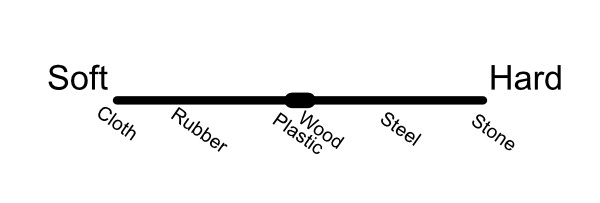
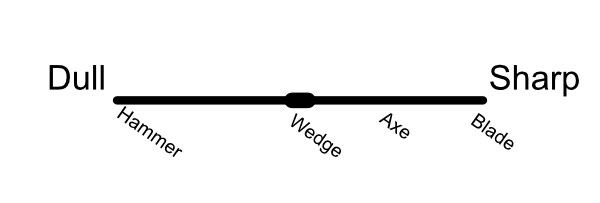
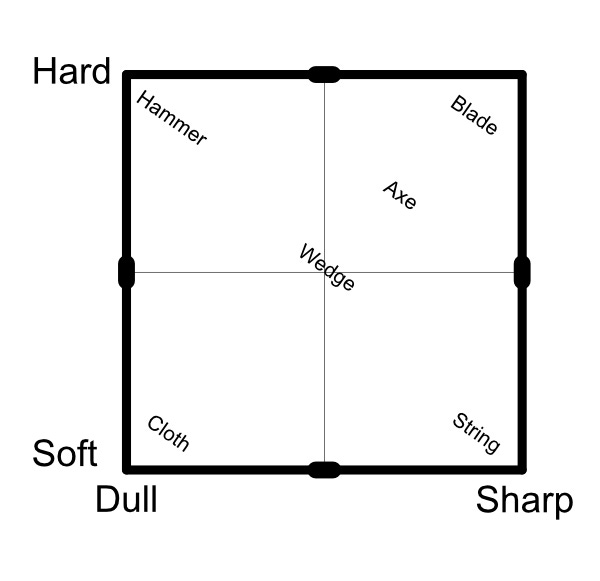
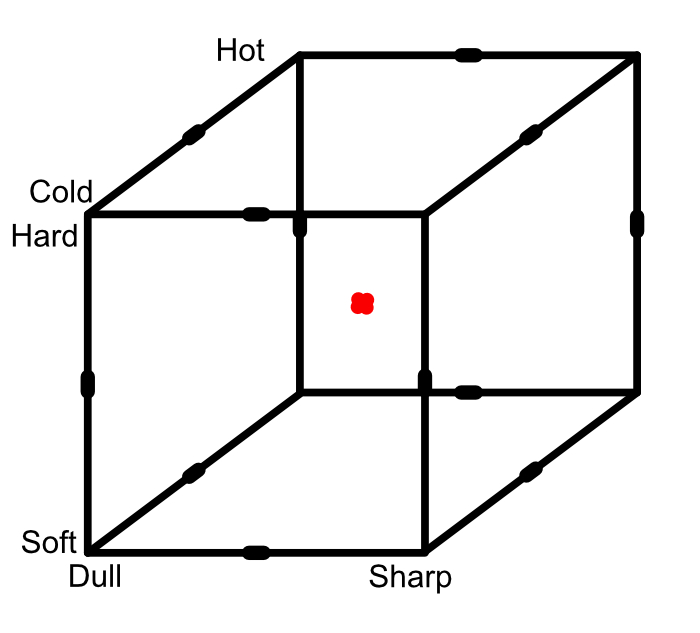

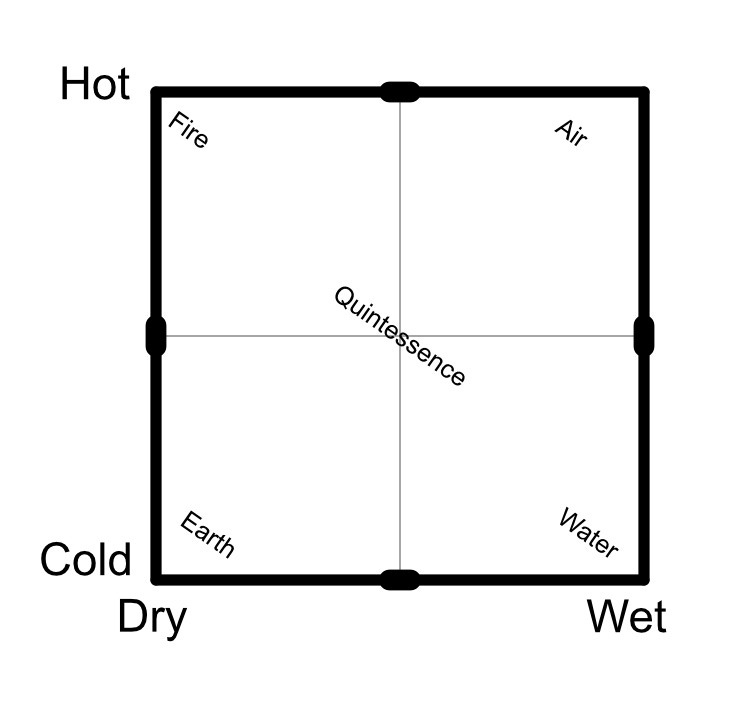
Great post. More like this please!